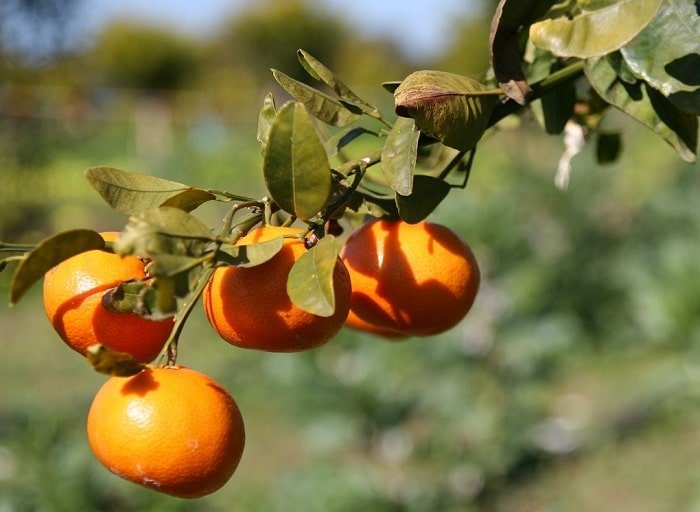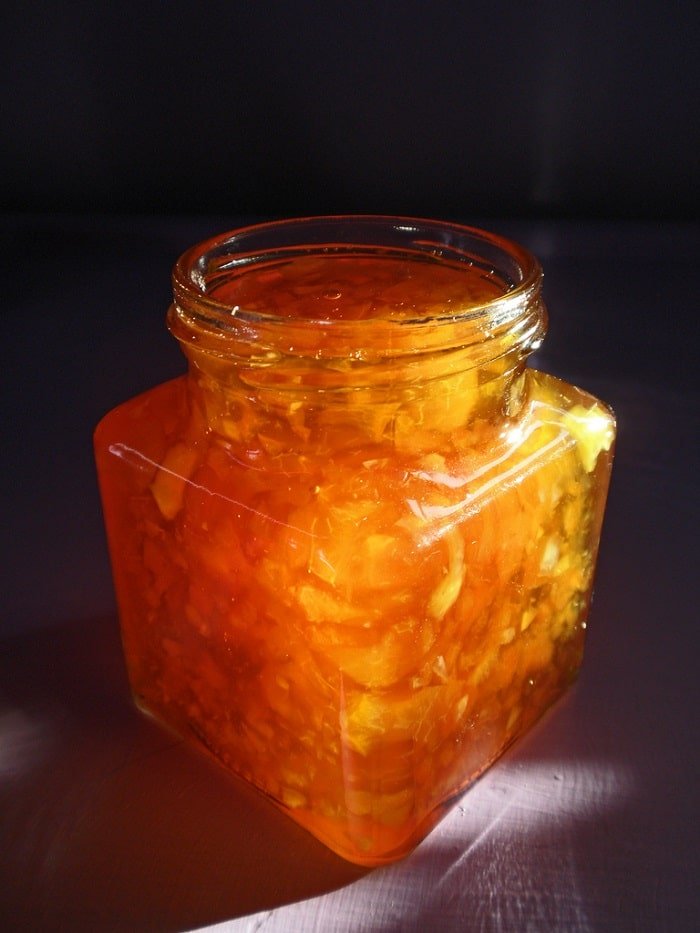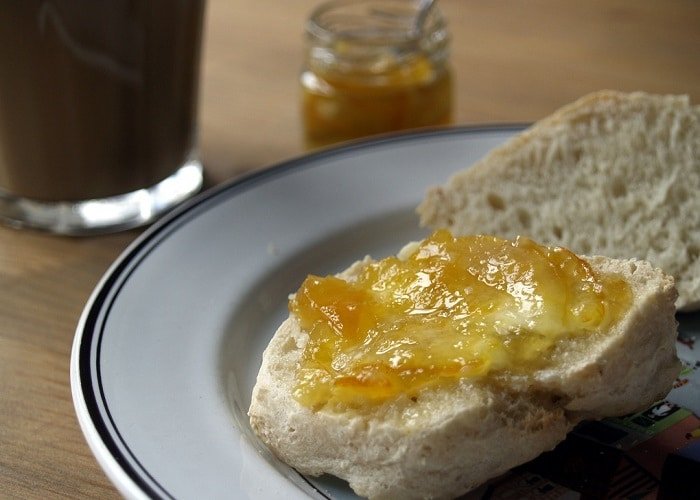
We expect certain things on a traditional British breakfast table. A pot of tea. Fresh toast. And a jar of marmalade. It remains the favourite of Paddington Bear. Whether you prefer thick cut or thin cut, the tangy preserve has been around for centuries. But is it in danger of losing its place of honour on the table? We look at the history of marmalade and its waning popularity.
What is Marmalade?
Lest there be anyone reading this who is not familiar with marmalade, it is a fruit preserve containing pieces of the fruit rind. The taste is typically more bitter than the sweetness of jam. Now you can find marmalade made from a variety of citrus – lemon, lime, bergamot, kumquats etc. However, purists insist that it be made with Seville oranges, also known as bitter oranges. The Seville orange arrived in Spain with the Moors in the 10th century. With a taste too bitter to enjoy raw, it contains a lot of pectin, making it perfect for preserving. Today, Spain grows an estimated 15,000 tonnes of Seville oranges for export to the UK.
As for the name, the word ‘marmalade’ comes from the Portuguese word for quince, or marmelo. It was originally made from quince. In time, oranges became cheaper and more readily available, and so cooks switched to using oranges in their marmalade. But the name stuck.

Marmalade’s Origins
There are multiple legends surrounding the origins of marmalade. One is that a doctor invented it to cure Mary, Queen of Scots’ seasickness. The bitterness of the orange would reportedly settle her queasy stomach. Some even went so far as to claim that the name itself comes from a contraction of “Mary est malade” (Mary is sick).
Another story is based around the Scottish city of Dundee. In the 18th century, a Spanish cargo ship dropped anchor in Dundee harbour, seeking refuge from a vicious storm. Its load of Seville oranges were considered unfit for general sale and so a local merchant, James Keiller, purchased them. His mother or wife, like many women of the time, made her own jam and used the oranges to make a batch. Apparently it proved so popular that the Keillers sold the product to the public, and in 1797 the first commercial marmalade appeared on the market. While this was not the first time marmalade was made, it was indeed the first record of a commercial product. Today, Dundee remains famed for its orange marmalade and Keiller’s marmalade is still produced, although now primarily for export.

In truth, fruits had been preserved in various forms of jam and jelly for centuries. Generations passed these recipes on via word of mouth rather than by writing them down and so we cannot be sure how close they were to the modern product. The earliest written recipes for marmalade come from the late 17th century. A notebook from Scotland’s Dunrobin Castle, dated 1683, details how to make “Orieng marmalot”. Food historian, Ivan Day, mentions a recipe for “Marmelet of Oranges” in Eliza Cholmondeley’s cookbook dating to about 1677.
George Orwell’s Marmalade
Even famed author George Orwell had much to say on the topic of marmalade. Although better known for his literary works such as Animal Farm, Orwell recently received a rather belated apology from the British Council. Back in 1946, he wrote an essay titled “British Cookery”. Editors considered the essay unsuitable for a continental reader. Facing particular criticism was Orwell’s recipe for orange marmalade, which contained Seville oranges, sweet oranges, and lemons. The editor dismissed as containing far too much sugar (8lbs!) and water (8 pints). Incidentally, Orwell described breakfast as a most serious meal”
After the meat course comes bread, or more often toast, with butter and orange marmalade. It must be orange marmalade, though honey is a possible substitute. Other kinds of jam are seldom eaten at breakfast, and marmalade does not often appear at other times of (the) day.
In February, 2019, the British Council apologised for its rejection and published the essay in full.
Losing Popularity?
As much as we may think of marmalade as a staple on the British breakfast table, there are signs that its popularity is quickly fading. Sales had dropped noticeably in the past decade as younger people have shown a preference for peanut butter, if indeed they eat toast at all. Cereal and croissants have pushed toast aside. By 2017, 80% of all marmalade in the UK was bought by those aged 45 and older. Even worse, fewer than 1% of those under 28 claimed to have bought it within the past year.
So is marmalade dying out? Despite a short revival in popularity after the release of the Paddington Bear film in 2015, it would appear to be so. Tastes change and the current desite seems to be for sweetness, which the bitter Seville orange cannot provide. Fortunately, there are those working hard to keep marmalade alive and kicking.
Marmalade Festival
Every March, fans from around the world gather in Cumbria’s Dalemain House for the annual Marmalade Festival and Awards. Over the weekend, there are talks, cooking demonstrations, and market stalls selling every possible version of the product. Thousands of jars will be competing in the awards, in categories for homemade, artisan, and hotels and restaurants. Awards range from best Seville orange marmalade and best Octogenarian-made to best artisan-produced low-sugar, and so on. In addition to sharing the love of marmalade, the festival also raises thousands for the local Hospice at Home charity.

Make Your Own
The recipe below comes from Pam Corbin via the awards website.
1 kg Seville oranges
Juice of 2 lemons (100mls)
2 kg golden granulated sugar
Scrub the oranges and cut in half around their circumference. Squeeze out the juice and keep to one side.
Slice the fruits into the size pieces you prefer removing any thick pieces of the white inner pith. Save these for the pectin and tie them in a square of muslin.
Place the sliced peel, orange juice, pith bag in a large bowl and cover with 2 litres of water. Cover and leave to soak overnight or for up to 24 hours – this helps to soften the peel and release the pectin.
Transfer the mixture to a large heavy based pan. Cover and bring to the boil, then simmer for about 2 hours or until the peel is tender and breaks when gently pulled – the contents of the pan will have reduced by approximately one-third. Remove the pith bag, squeezing it firmly against the side of the pan to remove all its gummy goodness.
Add the lemon juice and the sugar. Bring the mixture to the boil, stirring until the sugar has dissolved. Boil rapidly until it reaches the setting point–this should take approximately 15 minutes at a full rolling boil but will depend on the size of pan you use and how hard the boil is. The marmalade is done when the mass of foamy bubbles on the surface have disappeared and the mixture appears to be thick and glossy.
Test for setting point by dropping of the mixture onto a very cold plate or a large stainless steel spoon – after a minute or so it should form a slight skin on the surface. Avoid over-cooking which results in a stiff overly sweet marmalade.
Remove from the heat and leave to cool for several minutes to allow the peel to evenly distribute – if you pour when the marmalade is too hot the peel will float to the top of the jar. Pour (to within 3 mm of the top) into sterilised jars and seal immediately.


